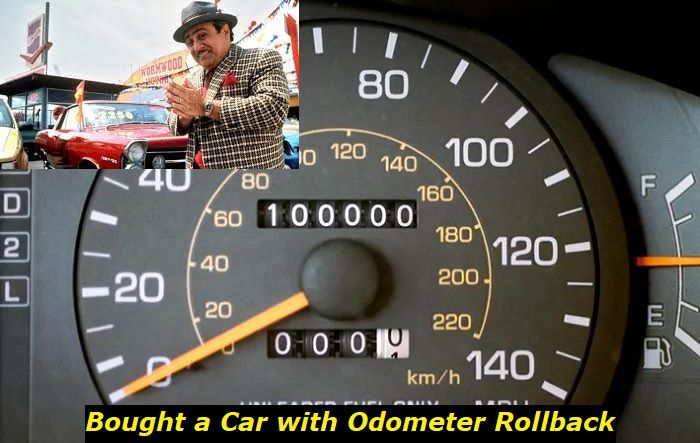The 1KD-FTV is a straight 4 cast iron 3.0L displacement common rail diesel engine with a power output of 163 to 188 HP and is mounted on some Toyota models like Hilux, 4Runner, HiAce, Fortuner, and of course, the Land Cruiser Prado.
Key features and my opinion about the engine
- Production years:2000-now
- Average lifespan of 1KD-FTV:190,000-220,000 miles
- Fuel supply type:Common Rail
- Power range:163-188 hp
- Fuel efficiency:good
- Engine block material:cast iron
- Engine reliability score:high
- The most common problems:early models had weak pistons, injection problems, oil consumption, noisy work and vibrations.

Is it a problematic engine?
Problems that you might never experience but are reported to have occurred are oil leaks or high oil consumption because of it, injector failure or other injector problems, and last but not least, cracked pistons.
The two latter are somehow related to each other as dirty or bad fuel injectors may cause pistons to crack and then cause bigger problems. It is also well documented by Toyota that the reason pistons crack is the injectors causing the wrong combustion, and many mechanics back that up.
Again I'm impressed that these pistons last as long as they do when you consider the work that they are doing. Oil leak, on the other hand, is usually caused by a bad gasket or oil burning, and that also can cause bigger problems. I should say that most people have heard about these problems, and that scares them, but I can also guarantee that the percentage of un-upgraded 1KD-FTV engines that have these problems is less than 5%.
Toyota makes great engines, and no one can argue with that, but upgrades can push engines to work much harder than they were supposed to do.
Why Do We Upgrade Our Engines?
Engine Upgrade is a modification we make in our engines to increase or enhance overall performance capabilities like power, torque, and even fuel efficiency. These are the main reasons we upgrade our engines, but again why do we do it, it all comes to our needs, maybe for fun, or to have a more powerful and/or faster vehicle, or maybe we do a lot of towing or off-roading and just need more power and torque. There are plenty of other reasons why we need to upgrade an engine.
Benefits and Flaws of Upgrading an Engine
Now that we know the reason why we want to upgrade an engine, it all comes down to overall higher performance like higher torque and power. But depending on the level and the type of engine upgrades that we do, we might push the engine work much harder than the factory has set it up to do, thus risking the shortening of the engine's life span or increasing the risk of a premature engine failure.
Methods to Upgrade Your 1KD-FTV Engine for Better Performance
The best way to have a good overall performance engine is to have one in factory condition or as close as it gets to it. So maintain it with the highest quality, fuel, oils, filters, and belts, and service it on time.
With that said, sometimes even more performance is needed from the engine, and we search for methods to upgrade it. In short, depending on the level of upgrade you need, ECU Remapping (Chip Tuning), Stage 1, 2, and 3 upgrades include most of the engine upgrades one can do.
More about this later. Stage 4 upgrade, is considered extreme, and is mostly applied to race cars.
1) ECU Remapping (Chip Tuning)
ECU (Electronic Control Unit) remapping is completed by changing/tuning the factory engine running parameters into a custom tune. It is a very common upgrade to increase both power and torque, usually by about 10-20%, it can also affect the fuel efficiency for good or bad depending on the remapping. It is the easiest and cheapest way to start upgrading your engine when you decide to do so.
ECU remapping is the same as Chip tuning in practice and has the same result, but most people presume that Chip tuning is a more complicated process because it involves the removal of the ECU to re-program it for better performance, fuel efficiency, or both, whereas remapping can be completed without removing the ECU at all, through the OBD. Actually, people use both names - remapping and tuning - for the same process.
Upgrading an engine doesn't come without flaws though, upgrading the flywheel or the whole clutch is sometimes necessary due to the added power and torque. Next, when remapped ECU engines have a problem that needs to be diagnosed through the OBD, the remapped ECU can easily fool the mechanic into chasing for a problem that isn't there but comes from the remapped ECU.
The remapping can also be easily lost/deleted, for example, if you update the ECU which some mechanics do after a repair, you lose the remapping. For simple things like Airbag recall, when you replace your Airbag they have to reprogram the ECU, and your remapping is gone.
Last but not least, a lot of engine fault lights can appear on your dashboard as a result of remapping and ruin the driving experience.
2) Stage 1 Upgrade
You have probably heard about stage 1, 2, 3, and maybe even stage 4 upgrades by now, but wonder what is all that about, we'll start with the stage 1 upgrade.
It usually consists of ECU Remapping that we talked about earlier, but now the remapping has to be done to match this stage of the upgrade. After that usually an air oil separator, also known as an oil mist separator/filter is fitted.
Except for stopping the oil mist as the name suggests, the oil mist separator stops unburned fuel, and the pollutants entering the engine's intake and causing carbon build-up, and loss of the engine's performance.
It seems like a financially better idea to have the stage 1 upgrade completed at once, than first do the ECU remapping, and then only the mist separator. I would also consider the upgrade of fuel injectors at this stage, or at least put genuine new injectors, particularly on 1KD-FTV because as mentioned earlier, they may fail and cause bigger problems. Especially after the upgrade, with higher engine power, there is even more stress on the engine and an even bigger risk for injectors to fail.
The stage 1 upgrade will usually increase the engine power by up to 35%, and torque by up to 30%. The service shop normally performs the dyno and provides the owner with the dyno graph which shows the differences in power and torque before and after the upgrade.
3) Stage 2 Upgrade
Stage 2 upgrade is best suited for towing heavy loads or off-roading, it includes ECU remapping and stage 1 upgrades plus the fitment of a larger than standard capacity, usually front-mounted, intercooler.
The much bigger intercooler is more capable and can handle the heat from the engine on heavy towing or hard engine work in general. All intercooler connecting hoses should be replaced with heavier-duty hoses as well, because of the added stress from the higher power of the engine and heat. They are usually made out of silicone and are much stronger and more durable than the vehicle's rubber hoses mounted by the factory.
It is worth saying that some consider upgrading the turbocharger at this stage, because of the temperature drops that were measured on the intake after the upgraded intercooler was installed. But we will leave the turbocharger upgrade for the stage 3 upgrade.
After this, mechanics perform the dyno to see the power and torque gain, some even test the vehicle on the road and make the final adjustments and tuning for the best performance and drivability.
4) Stage 3 Upgrade
Many consider stage 3 upgrade as the highest upgrade stage, and it also includes all earlier upgrades, that may have already been completed or should be completed at this stage.
Stage 3 is when an upgraded turbocharger is usually fitted. An upgraded turbocharger provides even more power and torque, usually has a great low rev range response, and carries the performance/boost more efficiently throughout the whole rev range.
In some places, it is considered illegal, but some consider DPF (Diesel Particle Filter) Removal on stage 3, or even on stage 2 upgrade. The same goes for aftermarket downpipes, they usually are less restrictive than the stock ones, and their bigger diameter allows for greater space for a faster turbo spin.
This is usually all done together with the exhaust system upgrade, which can also gain some more power for the engine, and enhance the engine sound as well, depending if you put a straight pipe, a resonator, or a large add-on muffler.
The vehicle's air intake also gets upgraded at this stage, air box kits have been installed on numerous 1KD-FTVs, and they have been proven to be durable, effective, and efficient in increasing inlet flow for the engine.
About the authors
The CarAraC research team is composed of seasoned auto mechanics and automotive industry professionals, including individuals with advanced degrees and certifications in their field. Our team members boast prestigious credentials, reflecting their extensive knowledge and skills. These qualifications include: IMI: Institute of the Motor Industry, ASE-Certified Master Automobile Technicians; Coventry University, Graduate of MA in Automotive Journalism; Politecnico di Torino, Italy, MS Automotive Engineering; Ss. Cyril and Methodius University in Skopje, Mechanical University in Skopje; TOC Automotive College; DHA Suffa University, Department of Mechanical Engineering






Add comment